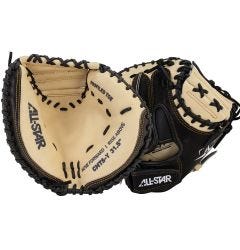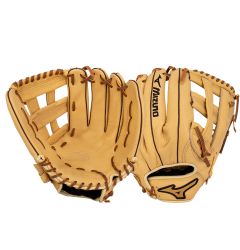How to Size a Baseball Glove for a Kid

The early years of youth baseball are the most pivotal and impactful years of any ballplayer’s career. The skills they build and the memories they make during these years will propel them forward in the sport as they build their love of the game. Therefore, it is vital to give each developing player the best opportunity possible for success. This begins with ensuring they have a glove that fits them properly
Types of Baseball Gloves for Kids
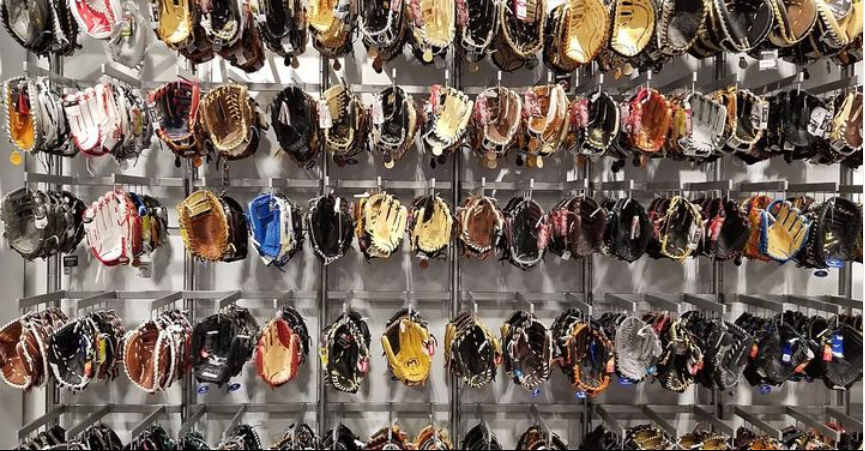

Youth baseball gloves are scaled-down versions of adult gloves with specific changes to better fit the needs of the youth player. For example, youth gloves will often be made out of synthetic materials or lightweight leather to reduce the weight of the glove and make it easier to use for the kids. These materials often do not require much break-in allowing the player to practice with the glove immediately. Because these gloves are quickly outgrown, the longevity of the glove is not the priority, an aspect reflected in their price. Instead, priority is given to including specific features in these gloves to make them easier to use for young hands. This includes features such as adjustable wrist straps and notches in the heel of the glove to make the glove easier to close for small hands.
Position-Specific Gloves
In youth baseball, many players play multiple positions so position-specific gloves are not a requirement. Therefore, there are no youth outfield-specific models. Players will use the same glove across these positions. However, positions such as catcher and first base do require a unique glove. Manufacturers make these gloves with specific features to make them easier for youth hands. These features include adjustable wrist straps, softer leather, and notches in the heel of the glove to make it easier to close.
Materials and Web Types


On youth gloves, the priority is on lightweight, ease of break-in, and comfort. Therefore manufacturers forgo the heavy leather found on adult gloves and instead opt for lightweight leather and synthetic materials. For leather, most youth gloves are cowhide which is lightweight, performs well, and is often “pre-oiled” to reduce break-in time.
For extremely young players, gloves often feature the basket weave web. This web is one of the easiest to close because of the flexibility within the web design. This is also one of the most secure webs, not having any openings for the ball to go through. These make it great for baseball players just starting their playing journey.
Once players get a little older, youth gloves are available in a variety of web designs such as I-webs and H-webs. These are the most common web types and are named after the strips of leather that form the shape of an I and an H on the back of the web. For more information on the different web types, consult our Baseball Glove Buying Guide.
How to Size a Baseball Glove for Your Child
Baseball Gloves Sizing Chart by Position and Age
The chart below shows an estimate of the size range of the glove for a specific player for baseball:
| Age | Catcher | First Base | Second Base/ Short Stop | Third Base | Pitcher | Outfield |
|---|---|---|---|---|---|---|
| Under 7 | 29.5 - 30" | 11.5" | 8 - 10.5" | 8 - 10.5" | 8 - 10.5" | 9 - 10.5" |
| 8 - 10 | 30 - 31" | 11.5 - 12" | 10.5 - 11.25" | 10.5 - 11.5" | 10.5 - 11.5" | 10 - 12" |
| 11 - 13 | 30 - 32.5" | 11.5 - 12" | 11 - 11.5" | 11 - 11.75" | 11.5 - 12" | 11.75 - 12.75" |
| Over 14 | 32 - 34.5" | 12 - 13" | 11.25 - 11.5" | 11.5 - 12" | 11.5 - 12" | 12 - 13" |
When sizing a glove for your child, consult this chart to ensure you get a size that will allow your child to be successful on the field. When getting your new glove, ensure it fits snuggly on the hand, without being too tight on the fingers and wrist. Also, make sure that the glove is not too long or heavy to hinder the player when they are running or making plays.
Considering the Age and Skill Level
Youth players will quickly outgrow their equipment with age. For this reason, consider getting a glove that is on the bigger side to allow them to grow into it and use it for multiple seasons. However, be sure to not get a glove that is too big as it will hinder their ability on the field and even lead to injury. Consider the skill level the player is playing at. As players mature and develop their skills, the velocities of throws and hits increase. It can be helpful to have a stronger and more durable glove to keep players safe and successful on the field.
Importance of Proper Sizing
When fitting your child for a glove, pay attention to how loose or tight it is on the hand and wrist. A glove that is too tight can cause injury to the hand when catching the ball. Similarly, a glove that is too big or too long can cause injury to the wrist as the glove snaps back when catching. The glove should be comfortable for the player. Choosing a glove with an adjustable wrist strap can be a great option for younger players. For more information on proper sizing, consult our Baseball Glove Size Chart.
Webbing and Back Design for Youth Baseball Gloves
The webbing is the part of the glove you are trying to catch the baseball in. It consists of the space between the thumb and the pointer finger. Webs come in different styles depending on position and personal preference. The back of the glove refers to the wrist closure. Most backs are referred to as being open or closed.
Choosing the Right Webbing for Youth Baseball Gloves
There are different types of webbing found in gloves for baseball and softball players. The type of webbing most common for infielder's gloves contains a looser stitch which gives more control in hopes of getting the ball out quicker - it also doesn’t pick up large clumps of dirt with it. Outfielders will typically choose gloves with open webs to allow for visibility while shielding the sun. Traditionally, there are eight different kinds of webbing to choose from:
- Closed/Basket Web
- H-web
- I-web
- Trapeze Web
- Modified Trapeze Web
- Two-piece Closed Web
Types of Baseball Glove Web Designs
As previously discussed, there are 8 general types of web designs for baseball gloves. There are more branches of designs, but these are your core 8.
Closed/Basket Web
Closed web and basket web gloves are designed to conceal the ball in the glove. They are typically used by catchers and pitchers, as well as some middle infielders. They’re easy to close with extra flexibility in the design.
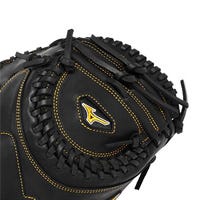
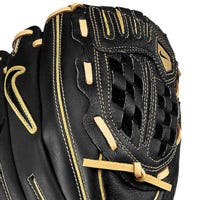
H-web
Commonly used by outfielders and third basemen the H Web design, also known as dual post web, offers a sturdy yet flexible structure while providing the ability to see through webbing for pop ups. Outfielders can use this design as well.
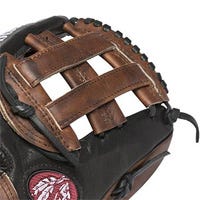
I-web
The I Web designs is used mostly by middle infielders due to the open webbing, which allows dirt and debris to fall out and not get stuck while fielding and throwing a ball. It also helps shield the sun from fly balls.
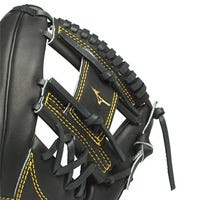
Trapeze Web
Trapeze web gloves are used almost exclusively by outfielders. The design has a deep pocket for maximum catching range and allows for visibility while shielding the sun from your eyes.
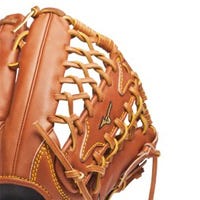
Modified Trapeze Web
The modified trapeze web is a versatile design that can be used by outfielders, infielders, and pitchers. It’s differentiated from the standard trapeze design by the strip of leather on the top of the web, which adds stability.
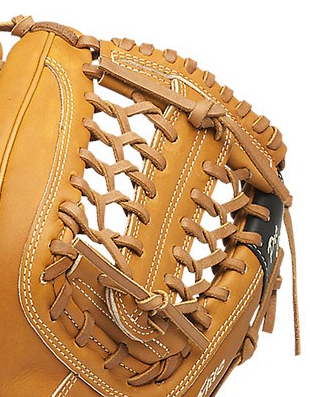
Two-Piece Closed Web
A perfect glove for pitchers, the two-piece closed web design offers an easy place to conceal your hand and the ball while on the mound.
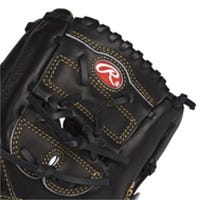
When it comes to youth glove webbing, there are a few different options. The most common web on youth gloves is the basket web. This is due to its great flexibility which makes the glove easy to close for smaller hands. Being an entirely closed web, it keeps the ball secure and does not have any openings for the ball to go through.
If the basket web is not for you, you can also choose from the I-Web and the H-Web designs. These are the most common web types and are named after the strips of leather that form the shape of an I and an H on the back of the web. I-Webs are great for fielding ground balls as they have a shallow pocket and let you see the ball into the pocket. H-webs have a deeper pocket and a little more stability due to the extra reinforcement. For more information on the different web types, consult our Baseball Glove Buying Guide.
Open Back vs. Closed Back
The type of back refers to the method of wrist closure. An open back will have an open space above the wrist which provides increased flexibility to the glove and hand. These are mostly used by infielders. Closed backs gloves do not have this space and sometimes have a single hole for the index finger. These gloves are used by outfielders and occasionally pitchers.
Brand and Budget Considerations
We are proud to offer the best brands of youth gloves at BaseballMonkey. Brands like All-Star, Franklin, Mizuno, and Rawlings have been trusted for their quality and craftsmanship for decades. Here are some of the top youth glove offerings from the top brands. You can view our complete youth glove selection here.
How To Choose A Baseball Glove For Kids FAQs
What is the difference between youth and adult gloves?
Youth baseball gloves are scaled-down versions of adult gloves with specific changes to better fit the needs of the youth player. For example, youth gloves will often be made out of synthetic materials or lightweight leather, do not need to be broken in, have an adjustable wrist strap, and notches in the heel to make the glove easy to close for small hands.
What materials are suitable for a kids' baseball glove?
On youth gloves, the priority is on lightweight, ease of break-in, and comfort. Therefore manufacturers opt for lightweight leather and synthetic materials. For leather, most youth gloves are cowhide which is lightweight, performs well, and is often “pre-oiled” to reduce break-in time.
Is there a specific brand that is recommended for kids' gloves?
We are proud to offer the best brands of youth gloves at BaseballMonkey. Brands like All-Star, Franklin, Mizuno, and Rawlings have been trusted for their quality and craftsmanship for decades. You can view our complete youth glove selection here.
Should I break in my kid’s baseball glove?
Most youth baseball gloves do not require to be broken in. However, if you feel like breaking in your glove more would benefit your player, you can follow our Baseball Glove Break-In Guide.




